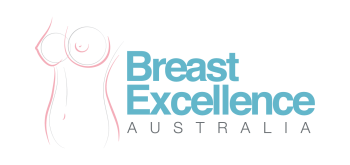Fat Transfer Breast Augmentation Sydney
Your complete guide and quick links to everything you want to know about Fat Tansfer Breast Augmentation in Sydney!
What Is Fat Transfer Breast Augmentation?
Fat Transfer Breast Augmentation is an innovative cosmetic procedure designed to enhance breast size using your own body fat. The technique involves a 3-step process: harvesting of fat using liposuction from areas of excess fat such as the abdomen, hips, or thighs, purifying it, and then injecting it into the breasts.
The method offers a natural alternative to traditional Breast Implants for those women who prefer a more organic enhancement, have adequate fat stores, and would be content with a moderate increase in breast size.
The appeal of Fat Transfer Breast Augmentation lies not only in its ability to increase breast size using the body’s own fat, but also by providing a more natural feel and appearance compared to implants.
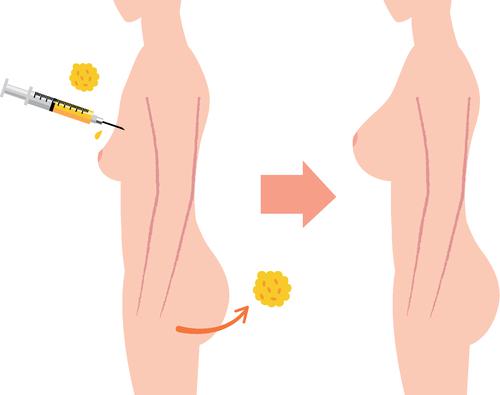
Advantages of Fat Transfer Breast Augmentation
- Natural Results: By using your own tissue, Fat Transfer Breast Augmentation ensures that your breasts will have a softer, more natural feel and shape compared to breast implants.
- No Risk of Rejection: As Fat Transfer Breast Augmentation uses your own tissue, there’s no risk that your body will reject it.
- Dual Benefits: Fat Transfer Breast Augmentation increases breast size while slimming down other body areas with excess fat such as the abdomen, thighs, hips or buttocks.
- Minimal Scarring: The small injection sites mean there are no large visible scars as occur with traditional breast augmentation surgery.
- Less Risk of Complications: Fat Transfer Breast Augmentation avoids all the potential problems of breast implants such as rupture, leakage, or capsular contracture.
- Quicker Recovery: There is less downtime compared to the longer healing times associated with implant surgery.
- Versatility: Fat Transfer Breast Augmentation can even be used to enhance the breast appearance in those who already have breast implants by correcting asymmetries, improving cleavage, and correcting shape deformities. The technique is also useful for reducing breast size differences whether naturally-occurring or after implants.
Disadvantages of Fat Transfer Breast Augmentation
- Fat Availability: To be a suitable candidate, you must have enough fat available for harvesting. Lean women with with little body fat may not be eligible for this procedure.
- Limited Size Increase: While the procedure can provide a natural enhancement, the increase in breast size is generally modest, averaging 1-1½ cup sizes. Accordingly, multiple sessions may be required if larger enhancements are desired.
- Fat Survival Rate: Not all transferred fat will survive: factors such as the method of harvesting and injection technique can affect how much fat will survive after the procedure.
Who is an Ideal Candidate?
- Women With Adequate Fat Stores: Candidates should have enough fat reserves on the abdomen, thighs, or hips for harvesting by liposuction.
- Those Seeking A Subtle Increase of Breast Size: Ideal for women looking for a subtle enhancement rather than a dramatic increase.
- Women Looking for Natural Results: Women who prefer the feel and look of natural tissue over implants.
- Those wishing to avoid the larger scars of Breast Implant Surgery.
- Women who do not wish to have breast implants or are unsuitable for them.
- Those Left With A ‘Deflated’ Breast Appearance after permanent removal of breast implants.
- Patients Wishing to Improve Various Breast Appearances whether naturally-occurring or following implants, such as:
- Size differences.
- Breast shape deformities or asymmetry.
- Poor cleavage.
- ‘Double Bubble’ deformities after breast implants.
- Insufficient upper breast fullness after breast reduction or breast lift surgery.
How Is It Done?
Fat Transfer Breast Augmentation is performed in a Licensed Hospital under General Anaesthesia administered by our Specialist Anaesthetist.
Hospital stay is not required and you can go home shortly after your procedure. However, you cannot go home alone. You must be accompanied by a responsible adult who can also be with you for the first 24 hours after surgery.
Fat Transfer Breast Augmentation involves three steps:
1. Harvesting of the Fat
- Fat is first extracted by gentle Tumescent Liposuction under low pressure to avoid damaging the donor fat cells. Very importantly, we do not use Vaser Liposuction to harvest the fat as the ultrasonic energy can injure the fat cells and decrease their chances of survival.
- Common donor sites include the abdomen, flanks, outer thighs, and hips. Very importantly, the fat needs to be removed under low suction pressure to avoid injuring the fat cells and decreasing their chances of survival.
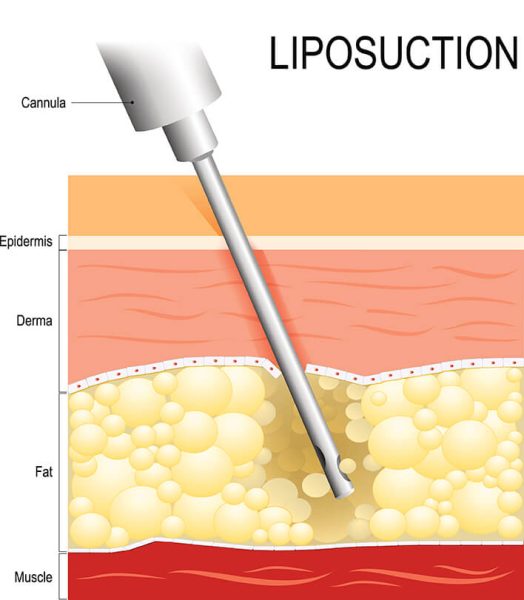
2. Processing The Harvested Fat
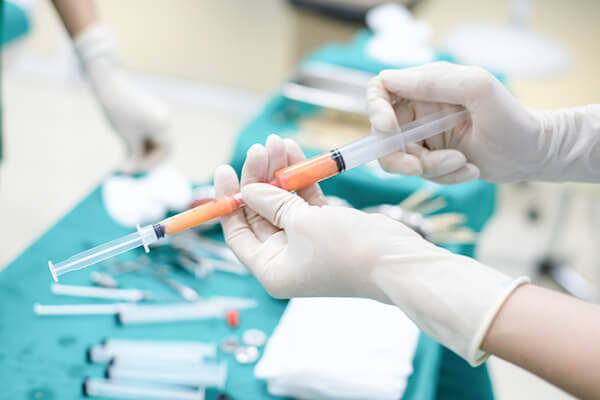
- The extracted fat is first processed to remove unwanted oils and fluids.
- The refined fat, rich in Stem Cells, is then loaded into multiple small syringes ready for injection. Stem Cells not only have a higher rate of survival than Mature Fat Cells, but they even have the ability to differentiate into Mature Fat Cells.
3. Injecting The Fat
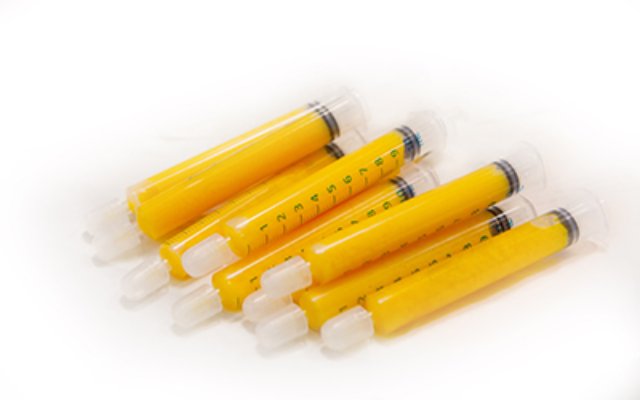
- The surgeon carefully injects the fat into the breast tissue using a meticulous, systematic pattern of ‘lines’ to ensure an even distribution.
- An optimal blood supply is always critical for the survival of the transferred fat cells. Depositing the fat in thin ‘lines’ as opposed to large clumps, significantly increases the chances of a successful blood supply and survival of the transferred fat cells.
- Realistically, not all fat cells will survive even when deposited as ‘lines’. How many will survive can never be predicted. Factors that can affect the viability of the fat cells include:
- How gently the fat is harvested.
- How the harvested fat is processed.
- How the fat is injected.
By carefully optimising each of these three stages, one can expect around 70-80% of the injected fat to survive.
Post-Operative Recovery
Fat Transfer Breast Augmentation is always performed in a Licensed Hospital under General Anaesthesia administered by our Specialist Anaesthetist, and post-operative recovery is typically straightforward.
- Immediate Aftercare: Stay in hospital stay is not necessary. You can go home shortly after your procedure but you cannot go home alone. You must be accompanied by a responsible adult who can be with you for the first 24 hours.
- Swelling and Bruising: It’s normal to experience swelling and bruising in both the breast and donor areas. These usually subside over the following 2-3 weeks.
- Pain and Discomfort: Any pain or discomfort can be managed with prescribed pain medications. Most patients report that the discomfort in the liposuctioned areas is more pronounced than in the breasts
- Activities: Light activities can usually be resumed after 3-4 days. You should be able to drive after 2-3 days but avoid strenuous activities for about 4 weeks to allow your body to heal properly.
- Diet: A high carbohydrate diet during the first 3 weeks is said to increase fat cell survival rates by raising blood insulin levels.
- Long-Term Results: Once the initial breast swelling has settled, your final breast size will become apparent . The fat that survives the transfer will remain stable, offering a natural- looking enhancement.
Potential Risks & Complications of Fat Transfer Breast Augmentation
While Fat Transfer Breast Augmentation is generally considered a safe procedure, potential risks and complications do exist as with any surgery. These include:
Specific to Fat Transfers:
- Lignocaine toxicity if large volumes of Tumescent Solution containing the local anaesthetic, Lignocaine, are injected.
- Contour irregularities in either the donor or recipient areas.
- Asymmetry of the breasts.
- Wide or thickened scars (hypertrophic or keloid) could occur if you are prone to them and pigmented scars are more likely in those with brown or Asian skin.
- Numbness or changes in skin sensation.
- Slow or poor healing. More likely in smokers and diabetics.
- Wound infection requiring topical wound care and antibiotics.
- Seroma (excess fluid accumulation under the skin) requiring one or more aspirations.
- Infection of the fatty tissues.
- Inadvertent injury to deeper structures such as nerves, blood vessels, muscles, lungs and abdominal organs during harvesting by liposuction.
- Fat Embolism as a result of inadvertent injection of fat directly into a blood vessel.
General Risks:
- Allergic reaction to medications, sutures, dressings, or antiseptic solutions.
- Deep Venous Thrombosis (DVT) and its potential to cause life-threatening Pulmonary Embolism. To reduce the risk of DVT, Calf Massagers can be applied for the entire duration of your surgery to prevent the blood in your leg veins from pooling and clotting.
- Adverse Reactions to Anaesthesia or Medication: The safety of anaesthesia nowadays in Australia is well established. Nevertheless, potential risks exist with all anaesthesia and unexpected reactions can occur. These may include nausea, vomiting, and allergic reactions ranging from minor to severe. Respiratory failure, heart failure, heart attack and stroke are rare but documented risks of any general anaesthesia.
Fat Transfer Breast Augmentation Sydney
– Watch Our Quick Explainer Video on Fat Transfer
What Is The Cost of Fat Transfer Breast Augmentation?

-
Fat Transfer Breast Augmentation Sydney
- Surgical Fee: Can only be determined at an Initial Consultation once the amount of Liposuction involved, the amount of Fat Transfer required, and the duration of your procedure have all been determined.
- Additional costs include Hospital Fee, Anaesthetist Fee & Post-Operative Compression Garment.
- Follow-up appointments for up to 6 months are included.
Can I Claim a Medicare or Private Health Insurance Rebate?
Unfortunately, you cannot claim a Medicare Rebate for Fat Transfer Breast Augmentation, nor can you claim on your Private Health Insurance.
We will provide you with a detailed and itemised quotation after your consultation.
FAQ
If your weight remains stable, you should keep your increase cup size indefinitely. Just remember that the injected fat will behave the same as the fat in other parts of your body. In other words, if you gain weight, your breast size will increase. On the other hand, if you lose weight, your breast size will decrease.
It is known that not all the injected fat cells survive after injection. What percentage of the transferred fat can I expect will survive?
The survival rate of the transferred fat cells can be maximised by each of the following factors:
- The fat needs to be very gently harvested to avoid damaging the fat cells. Liposuction must only use low suction pressure. Vaser Liposuction should be avoided.
- The fat needs to be processed very thoroughly to remove all traces of blood, oils, and unwanted tumescent fluids.
- The fat needs to be injected in a controlled and systematic pattern of ‘lines’, not clumps, to allow each ‘line’ of fat cells the best chance of establishing a connection to an adjacent blood supply.
Using these techniques, one can expect around 80% of the injected fat to survive. Allowance for this is made when deciding on the amount to be injected.
The survival rate of the transferred fat cells can be maximised by each of the following factors:
- The fat needs to be very gently harvested to avoid damaging the fat cells. Liposuction must only use low suction pressure. Vaser Liposuction should be avoided.
- The fat needs to be processed very thoroughly to remove all traces of blood, oils, and unwanted tumescent fluids.
- The fat needs to be injected in a controlled and systematic pattern of ‘lines’, not clumps, to allow each ‘line’ of fat cells the best chance of establishing a connection to an adjacent blood supply.
Using these techniques, one can expect around 80% of the injected fat to survive. Allowance for this is made when deciding on the amount to be injected.
These include:
- A more natural ‘look and feel’ to the breasts.
- All the potential complications associated with breast implants are avoided.
- Breast scars are avoided.
- Quicker recovery and return to normal activities than after breast implants.
- Minimal post-operative breast discomfort and only short-lived, mild discomfort in the liposuctioned donor areas.
- No specific restrictions during recovery as with breast implants.
- The bonus of slimming down your donor areas.
Breast Fat Grafting is performed in a Licensed Hospital under General Anaesthesia. Hospital stay is not required, and you can go home shortly after your procedure.
A special bra is not required. However, a post-operative Compression Garment for the liposuctioned areas is recommended for 6 weeks to give your donor areas the best chance of slimming down.
Your breasts will be swollen and may even show some minor superficial bruising from the injections, but the discomfort should be minimal.
Expect some mild discomfort in the liposuctioned areas but this can be easily relieved with simple pain-relievers.
Your initial breast swelling will decrease over 2-3 weeks following which it should remain stable. You should be able to drive after 2-3 days but avoid strenuous exercise for 4 weeks.
Most women are happy with their result from one Fat Transfer Breast Augmentation. However, the procedure can always be repeated if a further increase in size is desired.
The cost of Fat Transfer Breast Augmentation largely depends on how much liposuction is involved and the expected duration of your entire procedure. Our surgeon will give you a reliable cost estimate once they have assessed you at your initial consultation.
